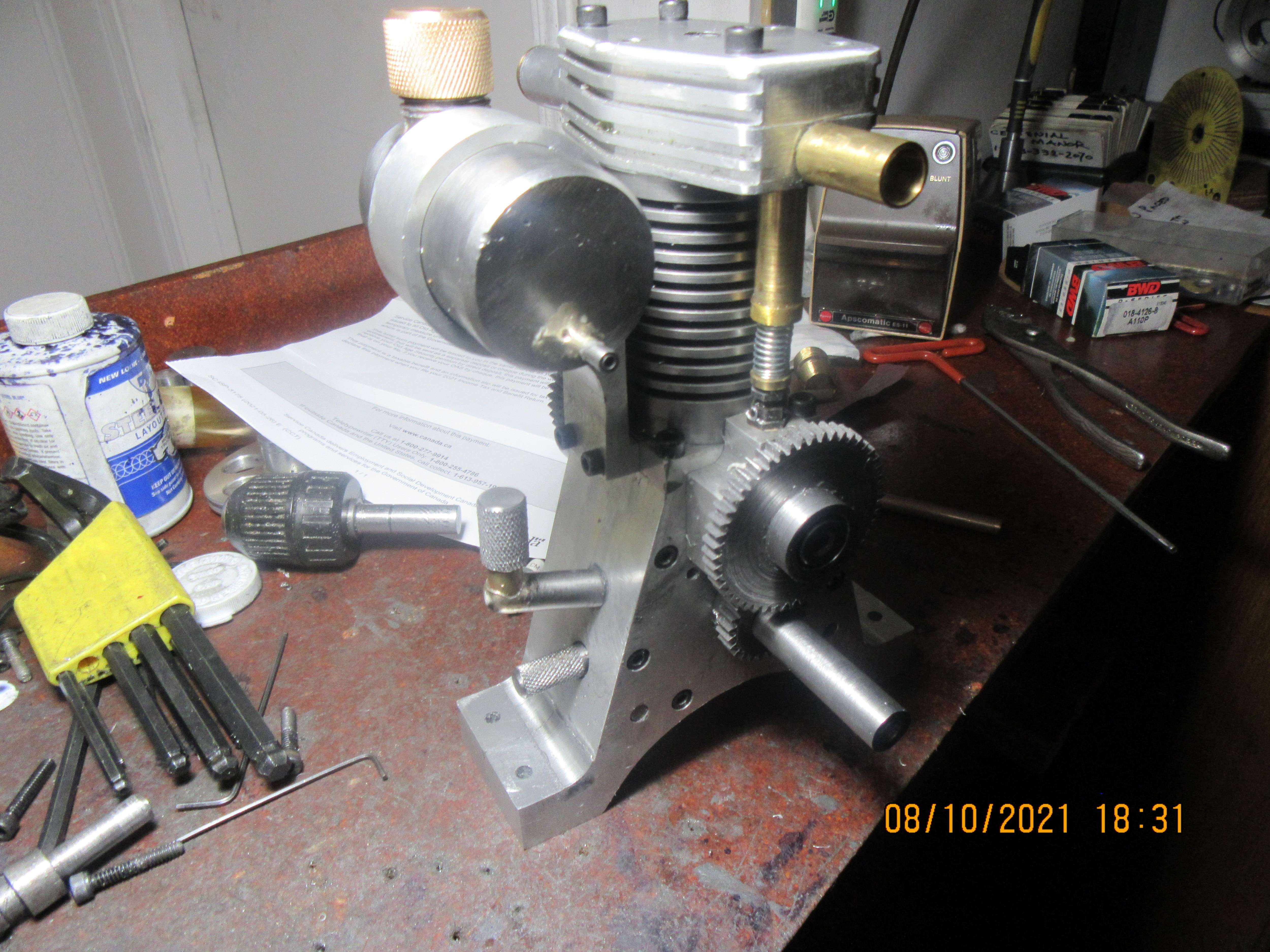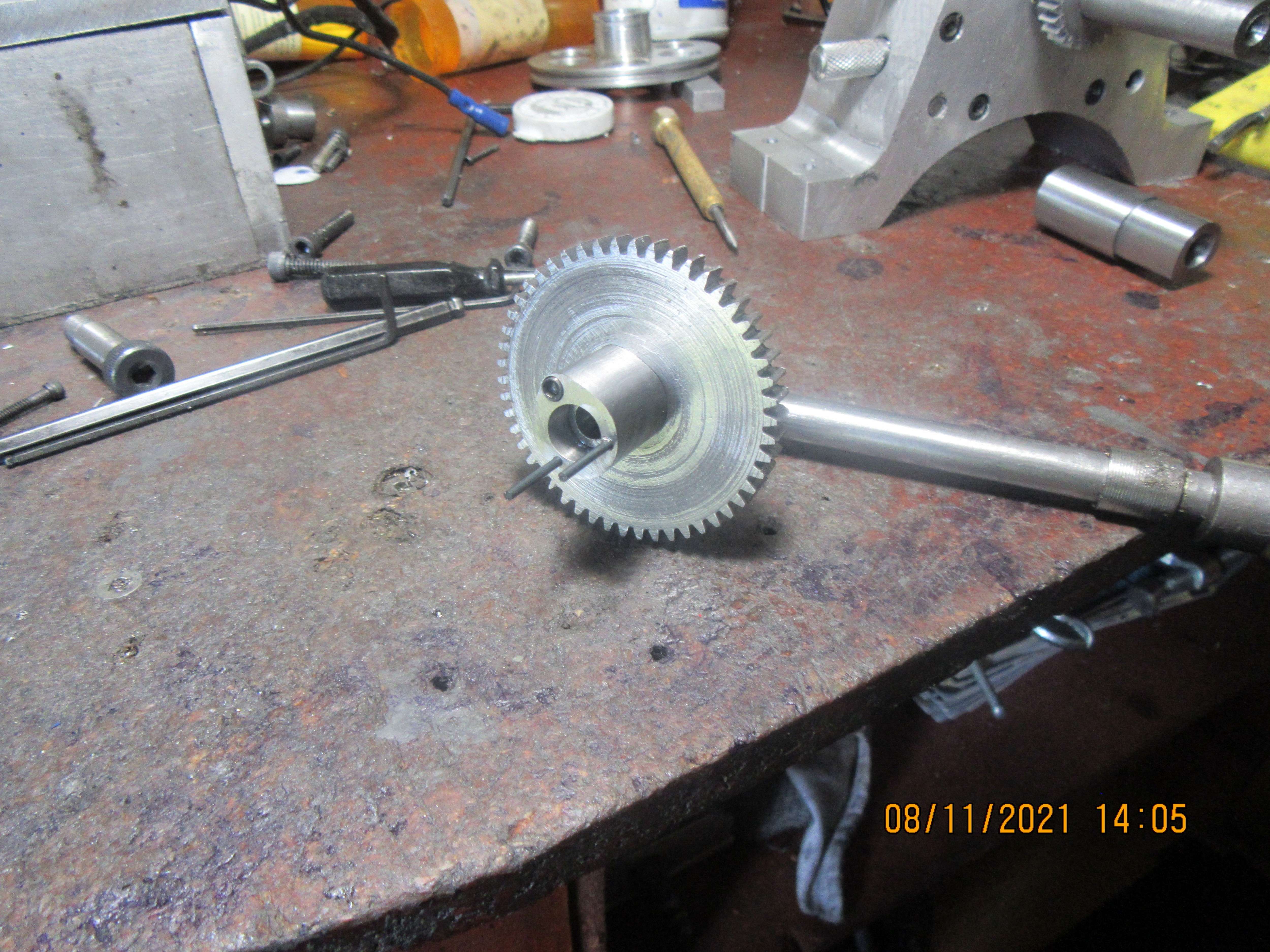Brian, what diameter are the flywheels? I have some steel casters that I bought from Princess Auto that might work, 3" dia. with 1 1/2" flange and 4" dia. with 2" flange. I would give them to you but the postage might cost more than they are worth.I spent the day working on a real job, but tonight I'm having a close look at this engine. I think that other than the flywheels and gear covers, everything is finished. I'm waiting for my cams to arrive, and there is a bit of finessing to connect the cams to the large gears. I don't need the gear covers to start the engine, so this could get exciting pretty soon. I'm still on the fence regarding the flywheels, but I want to go down to my nut and bolt store and look at something. They have a bin full of casters down there, and I remember seeing some large aluminum casters with rubber bonded to the outer rim. I have some double extra strong schedule 80 pipe here, and if I could machine the rubber off those aluminum casters and put some heavy wall pipe around the aluminum, it might make some nice flywheels.
John Leeds






































































